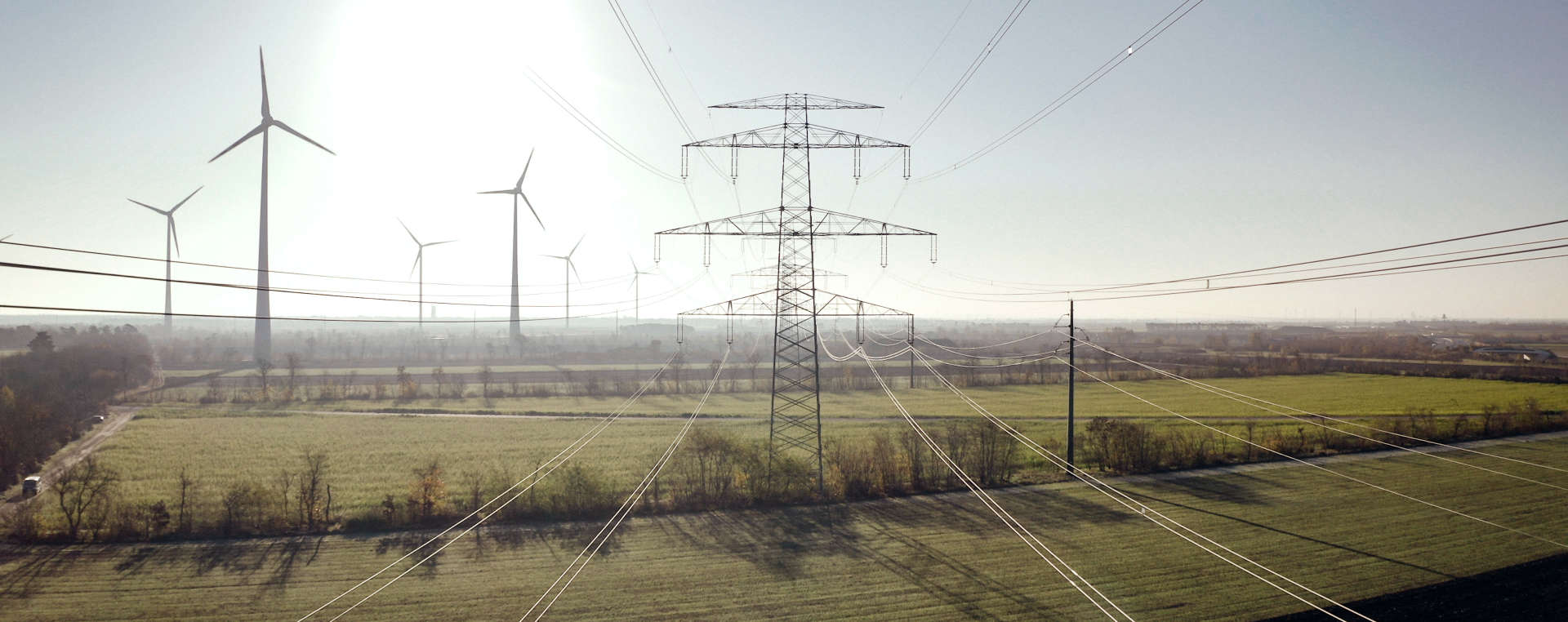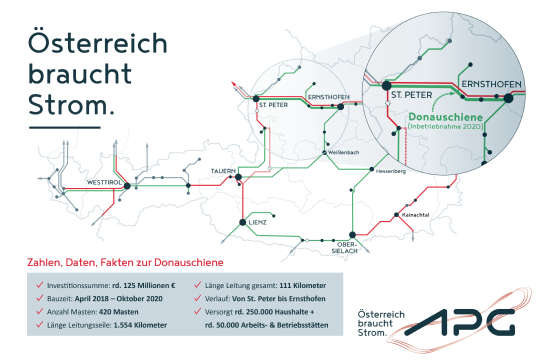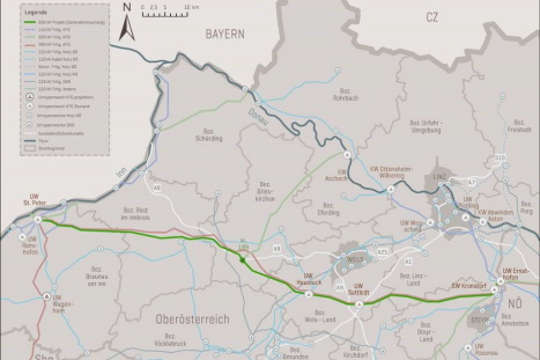
Danube line
Another major milestone in the process of transitioning to sustainable energy and ensuring a secure supply of electricity for the region was reached when the “Danube track” line commenced operation at the end of October 2020. Approximately 125 million euros was invested over a period of 2.5 years in developing a sustainable power infrastructure for the region.
General overhaul of the 220-kV Danube track line
Known as the “Danube track”, the 220-kV line was commissioned in 1941 and is an important supply line in the Upper Austrian power grid. The line, which runs through the Inn, Hausruck and Traunviertel regions, was due for a general overhaul due to its long service life and the increasingly complex requirements placed on the power grid. All of the transmission towers and cables in the existing line system were dismantled and replaced in this context.
The overhaul of the “Danube track” line has resulted in a high-performance system that is ready to meet the energy security requirements of the future in this region. Transmission line capacity has more than doubled. The new line also creates additional capacity for an improved integration of renewable energy sources in Upper Austria, in addition to the energy already supplied by the Aschach hydropower plant on the Danube. The “Danube track” line thus plays an important role in supporting energy transition and energy security, both at regional level and for all of Austria.
approx. €125m
Route
1,554
250,000
50,000
420
111
2018
2020
New line, old route
The existing route corridor – which runs from the St. Peter am Hart substation to the Hausruck and Sattledt substations and then on to the Ernsthofen substation – was used for placement of the lines. It was even possible to optimise the route in some instances. Improvements were also made to the transmission line towers in terms of their height (making them taller). The minimum distance from the ground is now 11 metres, which gives an average clearance of 7.5 metres. The higher towers will allow modern agricultural equipment, which often requires greater clearance height, to pass safely under the lines. This was made possible by the narrow tower design, which permitted the tower footprint to remain the same, thus creating ideal conditions for the local and regional (agricultural) economy.
Contact person
Sven Aberle
Project lead
Stefan Walehrach
Project communication



